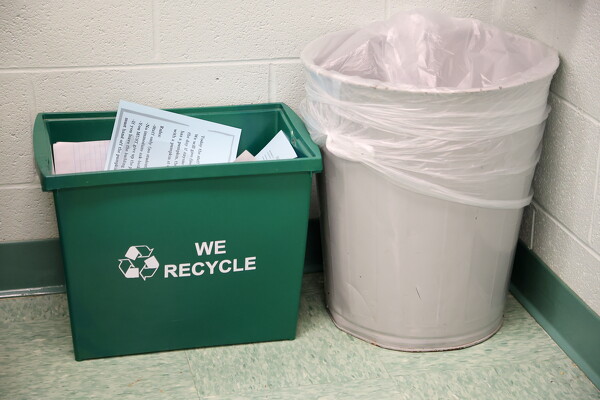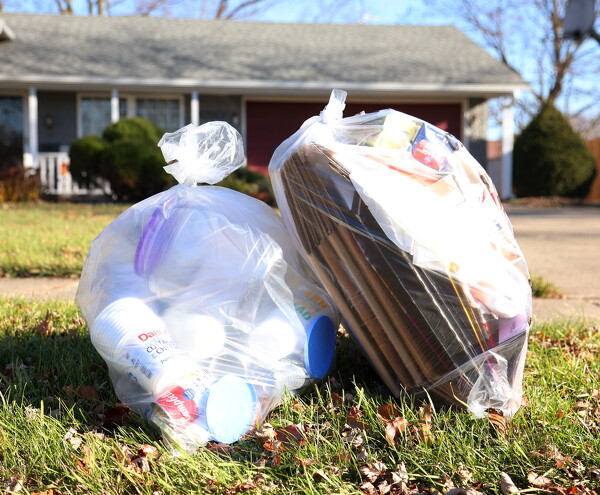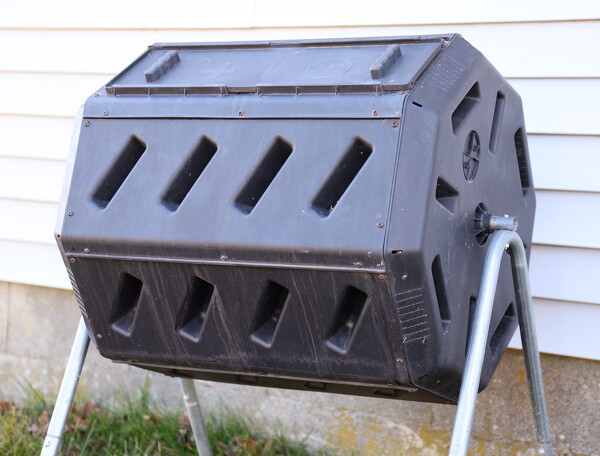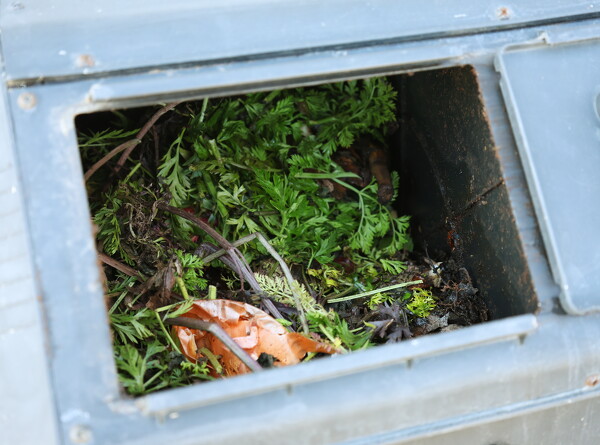
A recycling bin at Celina High School.
CELINA - Ohio produces more than 50 tons of waste per capita per year, making Ohio the fifth-most wasteful state in the nation.
However, residents can reduce excess trash and rubbish by reducing, reusing and recycling.
According to data from the U.S. Environmental Protection Agency, Ohio falls behind Illinois, Pennsylvania, Indiana and Michigan, with Michigan being the most wasteful state. Michigan produces nearly 70 tons of waste per capita annually.
Of the country's 292.4 million tons of garbage in 2018, 23% of it was paper and paperboard, 21.59% was food waste, 12.90% was plastics, 12.11% was yard trimmings and 8.76% were metals, according to the EPA.
To curb paper and paperboard waste, Auglaize County Recycling and Solid Waste District Coordinator Scott Cisco recommended citizens try their hand at recycling.
"We have containers out here (Auglaize County Recycling Center) where you can drop off your cardboard, your paper, your tin, aluminum, plastics, plastic bags," Cisco said. "We provide a pretty good service. I know Ohio Recycling, they're in Chickasaw, they provide a service there as well."
Grand Lake area citizens can also utilize the various curbside recycling programs.
"We have two in Auglaize County with St. Mary's and Wapakoneta," he said. "And I know Celina has curbside programs. As long as you are contributing to those places, I mean you're doing the best you can of the material you have."
Every county is different in its recycling procedure, said Carla Buening, district program manager at Mercer County Solid Waste.

Two recycling bags sit outside a home in Celina. One contains plastic bottles and cans, the other cardboard.
Mercer County uses a two bag system, she added. In bag one, residents should toss newspapers, catalogs, magazines, junk mail, office paper, food boxes with wax inserts removed, paper egg cartons and cardboard. Cardboard that is corrugated and tied in small bundles is also acceptable.
Residents should reserve the second bag for aluminum cans, foil, pie pans, rinsed tin cans, No. 1 and No. 2 plastic containers that are rinsed with caps removed and rinsed glass bottles and jars.
Equally as important is what residents should not recycle. Mercer County Solid Waste asks residents to not recycle salt bags, plastic wrapping, rubber bands, paper clips, carbon paper, hardback books, spiral notebooks, styrofoam egg cartons, waxed containers, facial tissues, paper towels, cellophane, multi-layer bags, paint cans and ribbons or bows.
Across the county line, Cisco said Auglaize County uses a designated plastic recycling container for all recyclable materials, which includes glass, aluminum, tin, cardboard, mixed paper, No. 1 plastic, No. 2 natural plastic, No. 1 color plastic, No. 5 plastic and plastic bags (in a designated container).

The indoor compost bin breaks down food waste into a natural fertilizer.
According to the U.S. Department of Agriculture (USDA), an estimated 30-40% of the country's food supply is wasted.
There are a few ways to help lower food waste. Residents can donate excess food to local food banks.
Composting is not just dumping food scraps and leaves into a bin. Compost is a mixture of decayed organic matter that deteriorates and is used for fertilizer. The practice has been around for centuries and allows people to create usable materials for their gardens and farms from what would otherwise be waste.

A modern compost bin outside a Celina home.

Inside the bin, organic matter breaks down and is later used as fertilizer.
"It's the same thing with about anything you do," Cisco said of composting. "You've got to be diligent and you got to stay with it to make it successful."
According to the EPA, consumers must have an equal balance of the following materials in order to start a compost in their backyards.
The ingredients for composting include a proper balance of carbon-rich materials, nitrogen-rich materials, water and air.
Some carbon-rich materials include dry leaves, plant stalks and twigs, non-glossy and uncolored shredded paper and shredded brown bags, shredded cardboard without wax coating, tape or glue, and untreated wood chips.
Examples of nitrogen-rich materials include fruit and vegetable scraps, grass clippings, coffee grounds and paper filters, paper tea bags without staples and crushed eggs shells, per the EPA. Small amounts of cooked food are also acceptable, though it may attract animals.
The EPA recommended environmentalists not add meat, fish or bones, cheese or dairy products, fats, oils or grease, compostable food service ware and bags, herbicide-treated plants and grass, aggressive weeds or weeds with seeds, diseased and pest-infested plants, treated or painted wood, pet waste or cat litter, dryer lint, glossy paper or produce stickers.
Another tip for consumers wanting to curb food waste is to learn the difference between phrases like "sell by," "use by" and expiration dates, the EPA suggested.
Interestingly, except for infant formula, product dating is not required by federal regulations, according to USDA. Manufacturers provide dates to help consumers and retailers decide when food is of best quality.
According to the USDA, a "best if used by/before" date indicates when a product will be of best flavor or quality and is not a purchase or safety date. A "sell-by" date tells the store how long to display the product for sale for inventory management. It is not a safety date.
A "use-by" date is the the last date recommended for the use of the product while at peak quality. It is not a safety date except for when used on infant formula. Finally, a "freeze-by" date indicates when a product should be frozen to maintain peak quality. It is not a purchase or safety date.
Auglaize County Environmental Educator Alexa Schwaderer said she rarely looks at expiration dates.
"My family, we don't really look at expiration dates," she said. "The new thing is shelf-stable food. Do expiration dates matter? People right now are so desperate for food. If it's clean and in a package, I don't really care."
- The Associated Press Contributed to this report.

This compost bin is small enough to sit on a shelf or kitchen counter.

A recycling bin in the teachers lounge at Celina High School.

